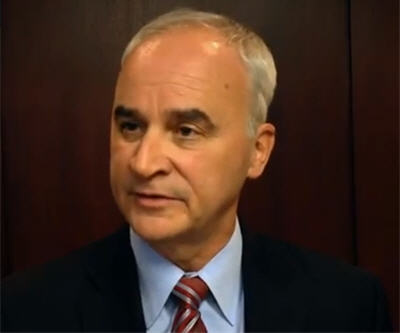VIDEO: Finning’s CEO says miners are trying to pace the rate of development

South American miners are emphasizing brown field development to contain costs, says Michael Waites, CEO of Finning (TSE:FTT).
“A lot of our customers are trying to pace the rate of development. There are concerns about capital cost over runs,” Waites told MINING.com in mid-January interview. (Video embed below.)
Vancouver-based Finning is the world’s largest Caterpillar dealership. It has 15,400 employees worldwide and revenues of $5.9 billion in 2011. In January the equipment dealer is celebrated its 80th year in operation.
Waites says brown field sales require more bulldozers and wheel loaders; whereas green field requires a complete package of items and large pieces of machinery, like electrical shovels.
He says the shift to more brown field activity has benefits for Finning.
“The supply chains respond more rationally and incrementally to the changes.”
Captial spending in Canada’s oil patch is also cautious due to the difficulty in getting a product to market.
“The oil sands—we believe—is a huge asset for Canada,” says Waites.
“What is going on right now—the margins are being depressed. A big part of that is the transportation situation—the pipeline situation.”
Waites would like to see more pipelines coming out of Alberta, so oil producers can access markets in Asia and the Gulf of Mexico.
He admitted frustration with Argentina where government regulations make it hard for his customers to access American dollars.
Finning is running more of a part and services business out of the country, which Waites said is doing OK but business could be better.
Aside from lower commodity prices is the continual problem of finding qualified personnel, a bottleneck in both northern Alberta and the mines in Chile.
Qualified welders, electricians and engineers are all in big demand and another reason miners are pacing development. Qualified workers are expensive.
{{ commodity.name }}
{{ post.title }}
{{ post.date }}


Comments